MongoDB Shell Collection MethodsFollowing are the MongoDB collection methods that are used in different scenarios. #1: db.collection.aggregate(pipeline, option)The aggregate method calculates mass values for the data in a collection/table or in a view. Pipeline: It is an array of mass data operations or stages. It can accept the pipeline as a separate argument, not as an element in an array. If the pipeline is not specified as an array, then the second parameter will not be specified. Option: A document that passes the aggregate command. It will be available only when you specify the pipeline as an array. Command Fields:
Example The examples use the collection library that contains the following documents: Calculating the sum Output: 
Specifying the collation #2 db.collection.bulkWrite()The bulkWrite() method performs multiple write operations with the order of execution control. Array of write operations are executed by this operation. Operations are executed in a specific order by default. Syntax: Output: 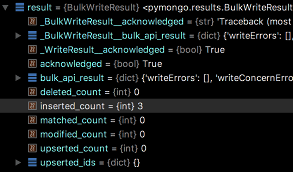
Execution of OperationsinsertOne: It inserts only one document into the collection. 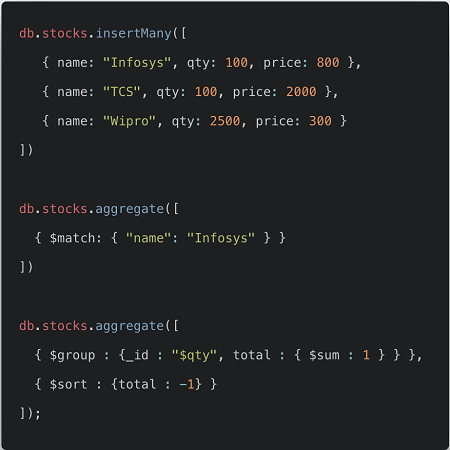
Update one: It updates only one document that matches the filter in the collection. Output: 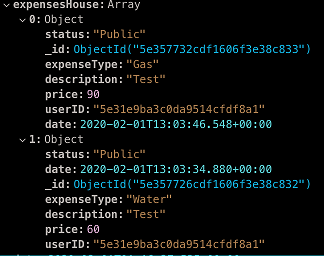
Update Many: It updates all the filter matched documents in the collection. replaceOne: It replaces a single document in the collection that matches the filter. # 3. db.collection.count(query, option)The count() method return the number of documents that would match a find method query for the collection or view. Example: We will count all the document in the javaTpoint collection using the following operation: Now, we will count all the documents that Match a Query in the javaTpoint collection with the field tut_dt greater than new Date ('01/01/2015') Output: 
#4. Db.collection.countDocuments(query, options)The countDocument() method return the number of documents that match the query for a collection or view. it does not use the metadata to return the count. Syntax: Examples: Below example will count the number of all the documents in the javaTpoint collection. Now, we will count all the documents that Match a Query in the javaTpoint collection with the field tut_dt greater than new Date ('01/01/2015') #5. db.collection.estimatedDocumentCount()The estimateddocumentCount() method counts all documents in a collection or view. This method wraps the count command. Syntax: Example The following example will retrieve the count of all the documents in the javaTpoint collection: #6. db.collection.createIndex()It can create the indexes on collections Syntax: Keys: For an ascending index on a field we need to specify a value of 1 and for the descending index we need to specify a value of -1. Example The example below creates an ascending index on the field tut_Date. The following example shows a compound index created on the tut_Date field and the tut_code field. The example below will create an index named as category_tutorial. The example creates the index with the collation that specifies the locale fr and comparison strength. #7. db.collection.createIndexes()The createIndexes() method creates one or more indexes on a collection. Syntax: Keypatterns: It is an array that contains the index specific documents. All the document have field-value pairs. For an ascending index on a field we need to specify a value of 1 and for the descending index we need to specify a value of -1 Example In the example below we considered a employee collection containing documents that resemble the following: Output: 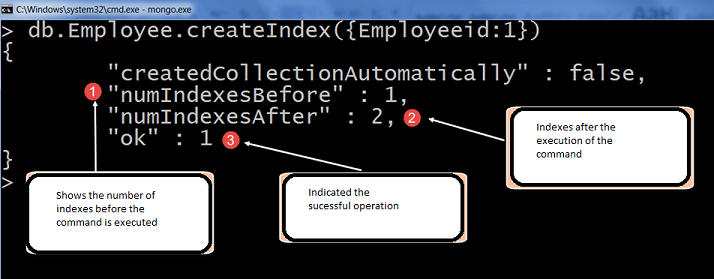
Now, the example below creates two indexes on the products collection:
The above indexes use a collation which specifies the basic fr and comparison strength as 2. #8. db.collection.dataSize()The data size method have a cover around the output of the collStats (i.e. db.collection.stats() ) command. #9. db.collection.deleteOne()The deleteOne() method deletes one document from the collection. It replaces the first document that is similar to the filter. You need to use a field that is related to a unique index such as id for perfect deletions. Syntax: Example The orders collection has documents with the following structure: The following operation deletes the order with _id: objectId ("563237a41a4d6858 2da"): Output: 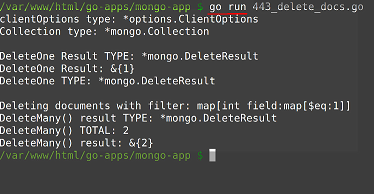
Next TopicMongoDB Cursor Methods
|
 For Videos Join Our Youtube Channel: Join Now
For Videos Join Our Youtube Channel: Join Now
Feedback
- Send your Feedback to [email protected]
Help Others, Please Share










